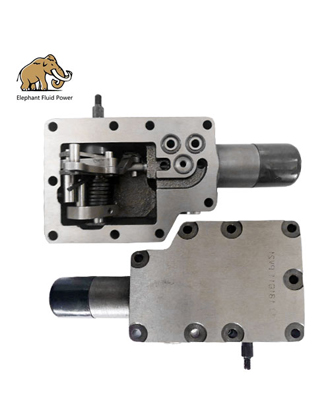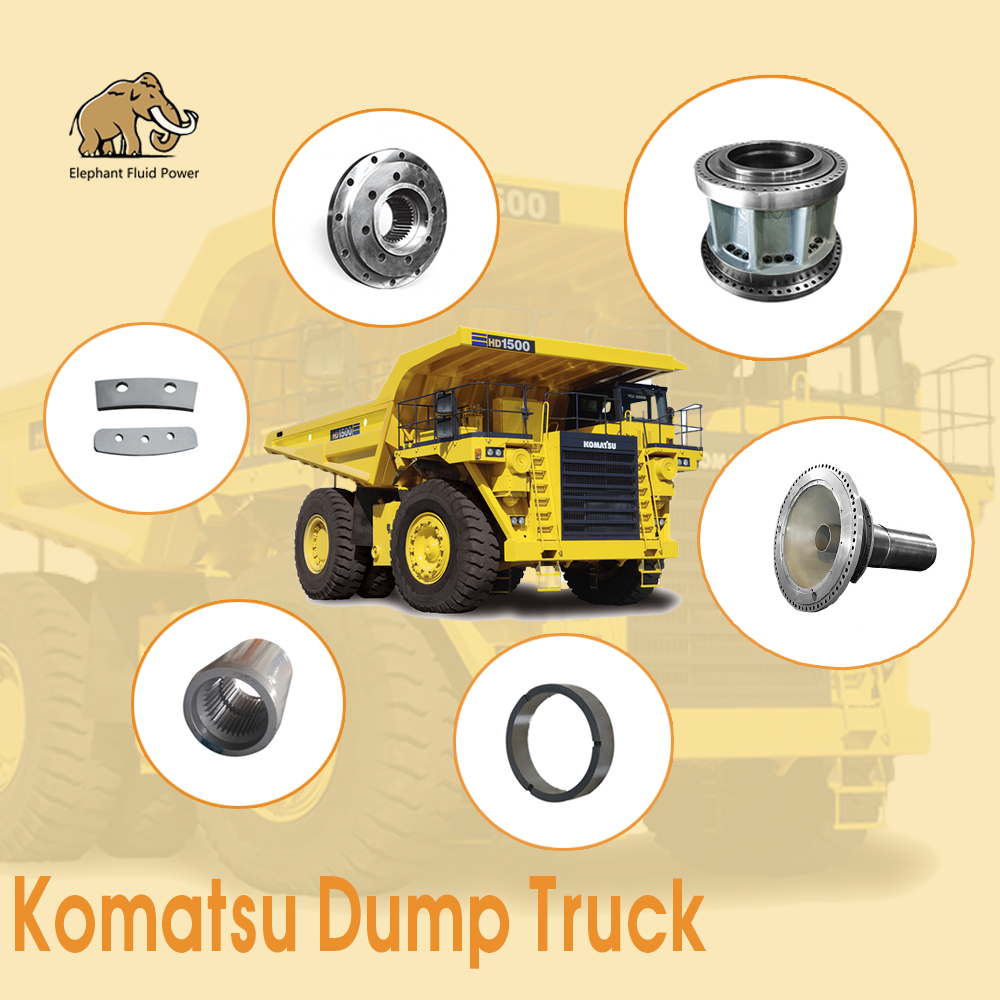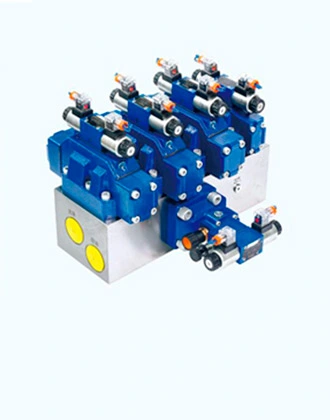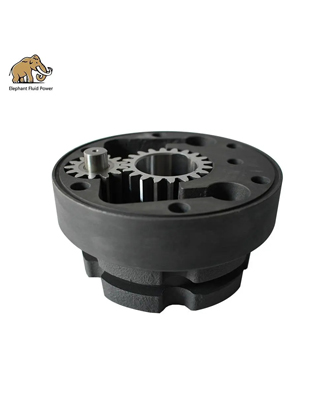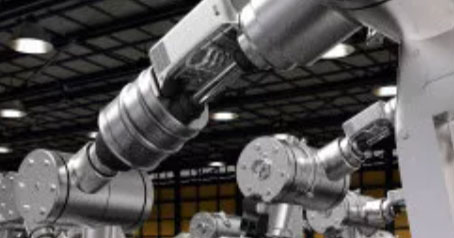Hydraulic systems are the backbone of many industrial applications, and hydraulic vane pumps are key players in these systems. These pumps rely on a variety of components working in tandem to provide reliable fluid displacement. In this blog, we'll take a comprehensive look at the essential hydraulic vane pump parts, their functions, and their significance in hydraulic systems.
Hydraulic Vane Pump Parts: An Overview
Hydraulic vane pumps consist of several vital parts, each contributing to the pump's functionality. These parts include the housing, rotor, vanes, cam ring, and ports. Let's delve into the details of each component. The housing, also known as the casing, is the outer shell of the hydraulic vane pump. It encloses all the internal components, providing protection and maintaining the fluid's integrity. The housing is designed to withstand high pressures and accommodate other parts within its structure. The rotor is a central rotating component within the housing. It is responsible for creating the pumping action by connecting with the vanes. The eccentricity of the rotor generates chambers of varying volumes as it rotates, creating the necessary suction and discharge of hydraulic fluid. Hydraulic vane pump parts include small, flat vanes that are housed in the rotor slots. These vanes are crucial for fluid displacement. They slide in and out of the rotor slots due to centrifugal force and hydraulic pressure changes. The movement of the vanes creates chambers of varying volumes, facilitating the fluid's movement from the pump's inlet to its outlet. The cam ring is an essential component that maintains contact with the vanes. It guides the vanes in and out of the rotor slots as the rotor rotates. The shape of the cam ring is designed to ensure consistent vane movement and optimal sealing, preventing leaks and improving pump efficiency.
Functions of Hydraulic Vane Pump Parts
Each part of a hydraulic vane pump plays a specific role in its overall operation. The rotor, vanes, and cam ring work together to create chambers of varying volumes. As the rotor rotates, these chambers trap and displace hydraulic fluid, generating a continuous flow from the pump's inlet to its outlet. The shape and arrangement of hydraulic vane pump parts contribute to the pump's ability to regulate pressure. The cam ring and vane movement ensure proper sealing and prevent excessive pressure buildup. The precise interaction between the rotor, vanes, and cam ring leads to efficient fluid displacement. This efficiency translates to reduced energy consumption and extended pump life. The robust design of hydraulic vane pump parts, such as the housing and rotor, ensures reliability even under high pressures and demanding conditions. Properly maintained pumps can provide consistent performance over an extended period.
Significance in Hydraulic Systems
Hydraulic vane pumps are integral to various industries, including manufacturing, construction, and automotive sectors. They find applications in power steering systems, material handling equipment, and more. The reliability, efficiency, and pressure regulation capabilities of these pumps make them ideal choices for tasks that demand consistent fluid movement and pressure maintenance.
In conclusion, understanding the key hydraulic vane pump parts and their functions is essential for anyone working with hydraulic systems. These components, including the housing, rotor, vanes, cam ring, and ports, work in harmony to facilitate fluid displacement, regulate pressure, and ensure efficient operation. Whether in heavy machinery or industrial equipment, hydraulic vane pumps and their components play a vital role in powering various applications.
 French
French
 Portuguese
Portuguese
 Russian
Russian
 German
German
 Spanish
Spanish
 Japanese
Japanese
 Korean
Korean
 Irish
Irish
 Greek
Greek
 Turkish
Turkish
 Italian
Italian
 Danish
Danish
 Romanian
Romanian
 Indonesian
Indonesian
 Czech
Czech
 Afrikaans
Afrikaans
 Swedish
Swedish
 Polish
Polish
 Basque
Basque
 Catalan
Catalan
 Esperanto
Esperanto
 Hindi
Hindi
 Lao
Lao
 Albanian
Albanian
 Amharic
Amharic
 Armenian
Armenian
 Azerbaijani
Azerbaijani
 Belarusian
Belarusian
 Bengali
Bengali
 Bosnian
Bosnian
 Bulgarian
Bulgarian
 Cebuano
Cebuano
 Chichewa
Chichewa
 Corsican
Corsican
 Croatian
Croatian
 Dutch
Dutch
 Estonian
Estonian
 Filipino
Filipino
 Finnish
Finnish
 Frisian
Frisian
 Galician
Galician
 Georgian
Georgian
 Gujarati
Gujarati
 Haitian
Haitian
 Hausa
Hausa
 Hawaiian
Hawaiian
 Hebrew
Hebrew
 Hmong
Hmong
 Hungarian
Hungarian
 Icelandic
Icelandic
 Igbo
Igbo
 Javanese
Javanese
 Kannada
Kannada
 Kazakh
Kazakh
 Khmer
Khmer
 Kurdish
Kurdish
 Kyrgyz
Kyrgyz
 Latin
Latin
 Latvian
Latvian
 Lithuanian
Lithuanian
 Luxembourg
Luxembourg
 Macedoniar
Macedoniar
 Malagasy
Malagasy
 Malay
Malay
 Malayalam
Malayalam
 Maltese
Maltese
 Maori
Maori
 Marathi
Marathi
 Mongolian
Mongolian
 Burmese
Burmese
 Nepali
Nepali
 Norwegian
Norwegian
 Pashto
Pashto
 Persian
Persian
 Punjabi
Punjabi
 Serbian
Serbian
 Sesotho
Sesotho
 Sinhala
Sinhala
 Slovak
Slovak
 Slovenian
Slovenian
 Somali
Somali
 Samoan
Samoan
 Scots Gaelic
Scots Gaelic
 Shona
Shona
 Sindhi
Sindhi
 Sundanese
Sundanese
 Swahili
Swahili
 Tajik
Tajik
 Tamil
Tamil
 Telugu
Telugu
 Thai
Thai
 Ukrainian
Ukrainian
 Urdu
Urdu
 Uzbek
Uzbek
 Vietnamese
Vietnamese
 Welsh
Welsh
 Xhosa
Xhosa
 Yiddish
Yiddish
 Yoruba
Yoruba
 Zulu
Zulu

